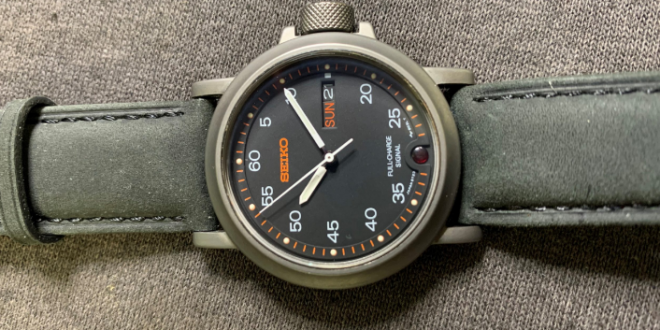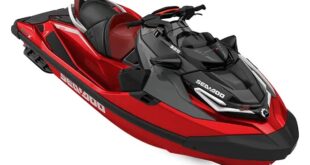Since the 1970s, Seiko has been a leader in innovation. They are always looking for methods to make their watches better and advance the field. Long ago, the Quartz watch was the beginning of it all, but since then, Seiko has advanced to technological advances like Solar and, most recently, Kinetic.
Naturally, they haven’t forgotten about the traditional Automatic (also known as self-winding) watches, for which the Swiss watch business is as well known. They also carry out those. A very high level is constantly maintained. However, we’ll contrast the Seiko Automatics also with Kinetic in this piece to discover what all the hype is about.
The Distinction between kinetic and automatic watches
A rotating disc powers both Automatic and Kinetic. Watch Store MagnusKing told the reporter that the main distinction is that the power is stored in a capacitor in kinetic watches as opposed to a spring in automatic watches. Mechanical principles are the foundation of automatic timepieces, which have been produced for almost 100 years. But how do they really operate?
In essence, the watch includes a sizable rotor that rotates when your wrist does, winding the watch for you in the process (like a swing on a playground). The power that moves the watch is actually generated by the spring that is wound by this rotor’s swinging motion.
You must manually wind a manual-winding watch by turning the crown just on side of the timepiece. The spring is wound up and stored energy is used to turn the watch’s gears as the crown is slowly turned.
Automatic watches have the drawback of requiring constant wear in order to keep the rotor turning and the watch charging, even though they can retain a charge for 48 hours based on the layout and the size of the spring. Yes, you may purchase a watch winder to keep your watch wound up and ready to go even if you’re not wearing it. However, it is an additional task that you must remember to complete. For obvious reasons, the majority of watch collectors possess and routinely utilize this.
How Do Kinetic Watches Operate?
Seiko invented the Kinetic watch mechanism in 1986. And it resembles an automatic watch in many ways. A kinetic watch operates by motion. An oscillating weight inside the watch is moved by swinging or moving your arm. As a result, a small generator generates electricity by turning a number of gears. The capacitor is then charged by the generator.
A kinetic wristwatch charges a capacitor rather than a spring, which is the main distinction between it and an automated watch. The diagram that follows, which was derived from such a Seiko user guide, demonstrates how it functions. The pieces are thoroughly explained. However, one may categorize both of them as motion-powered watches. So, just like an automatic watch, a Seiko Kinetic type watch requires regular wear to maintain its charge. You can also put this on a watch spool when it’s not being worn because it has to be moved.
One drawback of this kind of watch is that several users have mentioned on forums that capacitor eventually needs to be replaced, much like a battery. Automatic watches don’t have a problem with this. They simply keep moving forward!
The charge, however, makes a significant difference because kinetic watches may keep their charge for up to several months as opposed to automatic watches, which often only have a few days’ worth of charge at most. Read more
Additional details about kinetic and automatic watches
The mechanism of automatic watches uses an oscillating weight, or rotor, to provide stress to a wound mainspring, which in turn converts movement in the wearer’s wrist or arm into energy. A kinetic watch functions similarly to a quartz watch but, in this instance, the movement is turned into electric power and is saved in a self-charging battery. Despite this, a kinetic watch’s battery will need to be changed far less frequently than its quartz cousin.
Seiko invented the technique, which was first used in 1986. An automatic watch’s energy reserve will only last some few days at most, whereas a kinetic watch could keep time for several months when not being worn. The Seiko Kinetic Perpetual, in contrast, automatically sets the time and date for up to four years after it goes to sleep. All of the displays will be updated to the new time and date when the watch is enabled once more.
Customers who do own Seiko Kinetic watches have long questioned why they are using a watch winder on their timepieces ever since watch winders went on the market. Watches with automatic movements function by the inner rotor moving and spinning. The mainspring is wound by the rotor’s rotating, which also gradually powers the watch. Since there is no internal battery, the watch typically stops working in 1-3 days.
Unlike conventional automatic movement watches, the Seiko Kinetic movement watch has a distinctive design. In 1988, Seiko created the first Kinetic timepiece. There is a swinging internal rotor in the movement, but it is attached to a quartz crystal and a capacitor. The capacitor stores energy that powers the watch. The watch’s battery life may be as long as four years. We do not advise buying a watch winder because Kinetic watches have such extended battery lives.
Final words
When buying a watch winder for the automatic watches, many of our clients also own Epson Kinetic watches and will place the Seiko Kinetic watch in an empty slot. Although it produces a lovely display, the Kinetic watch cannot be charged by the watch winder’s round motion. Your kinetic watches will be powered by a device made by Seiko called the Kinetic Energy Supplier, which contains an internal magnet. You won’t see them sold very often because they are solely designed for specialists and watch dealers. We don’t see any need for a Kinetic energy provider for the typical individual because Seiko Kinetic watches retain their charge for a very long time.
 HammBurg Be informed with latest news, reviews, entertainment, lifestyle tips, and much more.
HammBurg Be informed with latest news, reviews, entertainment, lifestyle tips, and much more.




